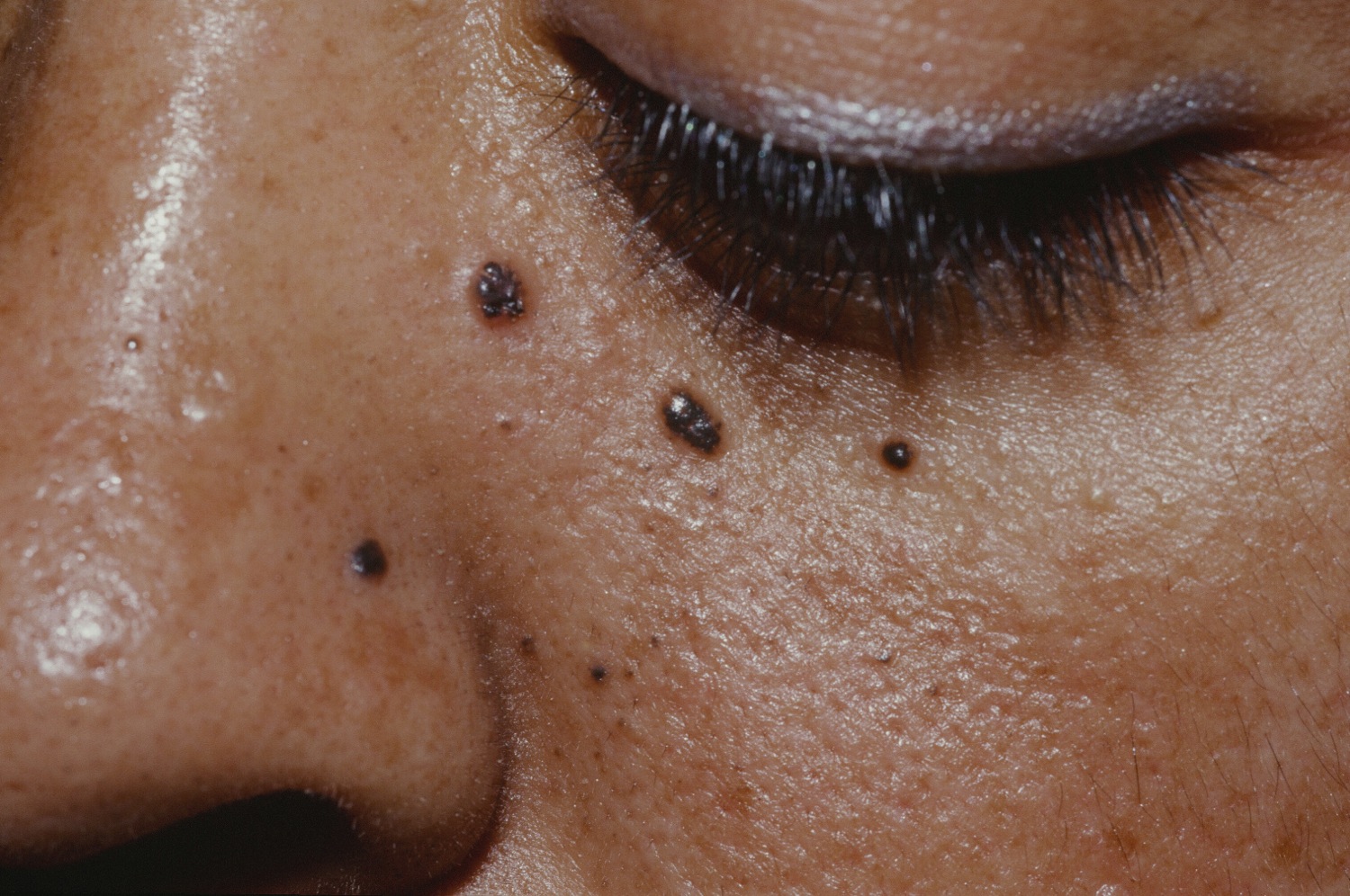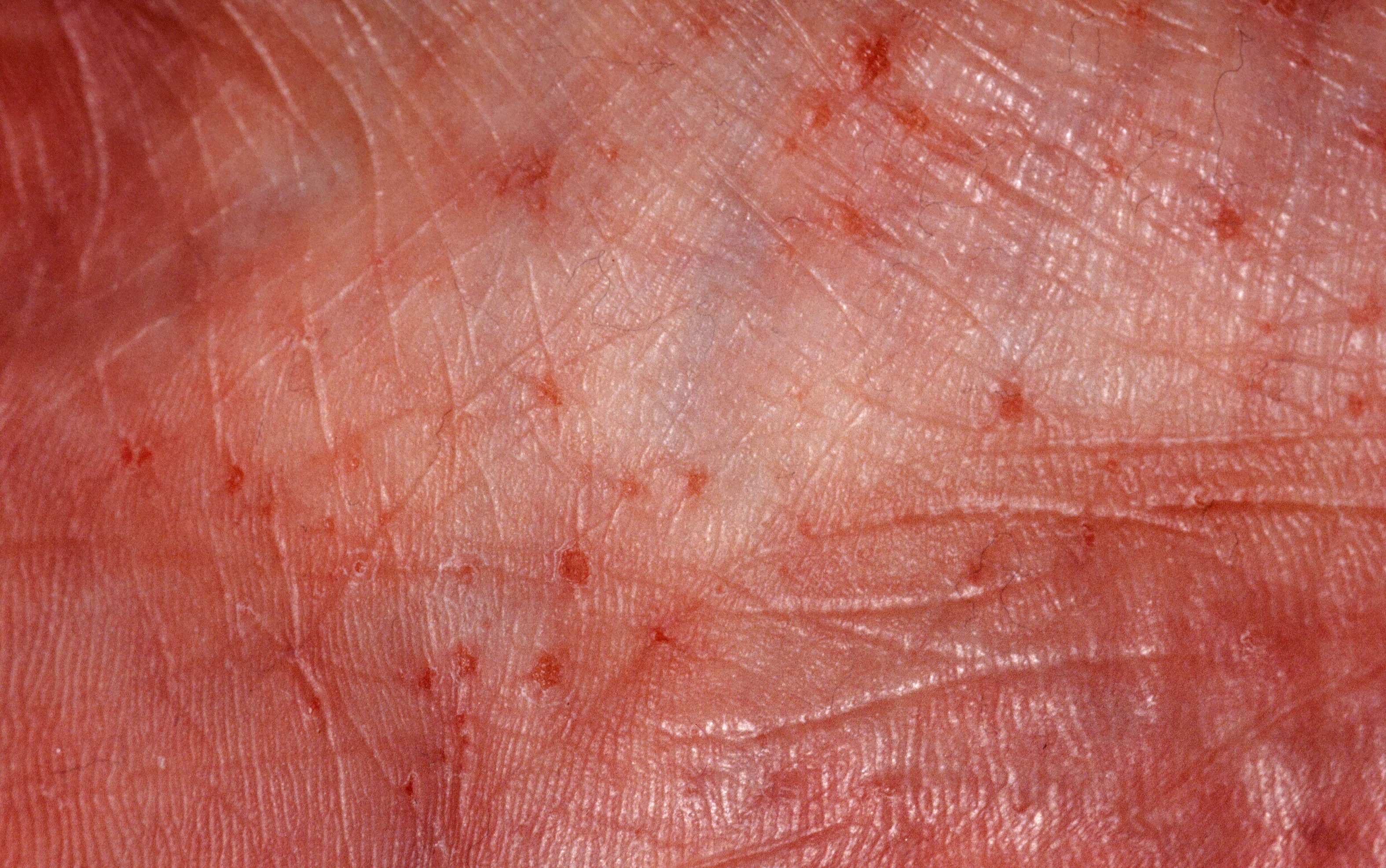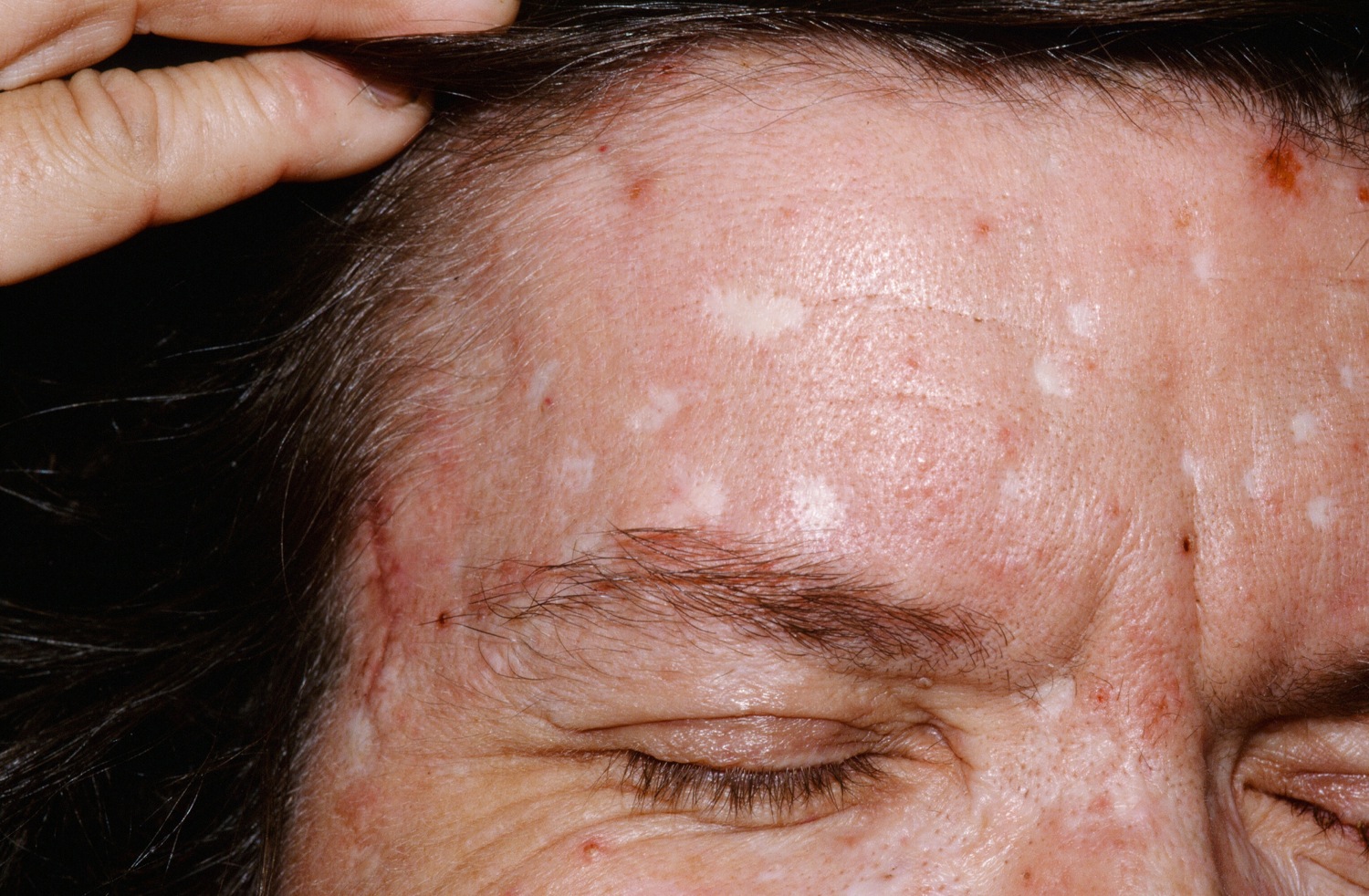
Multiple pigmented basal cell carcinomas in Basal Cell Nevus Syndrome.
BASAL CELL NEVUS SYNDROME
Basal cell nevus syndrome (BCNS), also known as Gorlin syndrome, is an autosomal dominant disease characterized by the presence of multiple basal cell carcinomas (BCC), odontogenic keratocysts, palmoplantar pits, and calcification in the falx cerebri caused by mutations in PTCH1, SMO or SUFU genes.
- BCNS is often familial, but up to 50% of cases are spontaneous mutations.
- Multiple BCCs without the other stigmata of BCNS may occur in Multiple Hereditary Infundibulocystic BCC Syndrome.
- Patients may present in childhood with meduloblastoma.
Clinical
The basal cell carcinomas usually have the same appearance as typical BCCs although they may have a tan or brown appearance like nevi. Pigmented BCCs are not uncommon. The sun-exposed areas are most commonly affected but areas that receive little to no sun (e.g., axilla, groin) may be affected as well.
Unilateral mosaic BCNS has been described.
Rarely the BCCs may metastasize.
The first 94 patients with BCNS in a US registry had the following characteristics: average age 56 years, lifetime mean of 312 BCCs, lifetime mean of 202 surgical procedures, median age of diagnosis at 15 years, jaw cysts in 80%, palmar pitting in 82%, ovarian fibromas in 21%, and meduloblastomas in 4%. 57% had tried vismodegib, but only 15% were on it at the time of the survey (most stopped due to side effects).
In one grand rounds case, a 3-year-old presented with three 3 mm pigmented papules scattered on the body. Biopsy showed BCC and workup, BCNS.
Diagnosis
Two major criteria, one major and two minor criteria, or one major criterion and genetic confirmation is required for diagnosis [from BJD 2016;174;68].
Major Criteria
- Odontogenic keratocysts of the jaw prior to 20 years of age
- Palmar or plantar pits
- Lamellar calcifications of the falx cerebri
- First-degree relative with Gorlin–Goltz syndrome
- Multiple basal cell carcinomas, out of proportion to those expected from sun damage, or one in a patient < 20 years old
- Medulloblastoma (desmoplastic) in early childhood
Minor Criteria
- Macrocephaly
- Rib abnormalities (fused, splayed, bifid)
- Skeletal abnormalities (Sprengel deformity, pectus deformity, syndactyly of digits, kyphoscoliosis)
- Congenital anomalies (cleft lip or palate, frontal bossing, coarse facies, hypertelorism)
- Radiological anomalies (bridging of the sella turcica, vertebral abnormalities, flame-shaped lucencies of the hands and feet)
- Ovarian fibroma, cardiac fibroma
- Lymphomesenteric cysts
- Ocular abnormalities (cataracts, developmental defects, retinal epithelium pigmentary changes, glaucoma, coloboma)

Palmar pits in Basal Cell Nevus Syndrome. Pits are found in 30%–65% of patients by the age of 10 years and in 85% of patients over the age of 20 years.

Multiple scars after removal of many BCCs.
RegionalDerm
Homepage | Who is Dr. White? | Privacy Policy | FAQs | Use of Images | Contact Dr. White
It is not the intention of RegionalDerm.com to provide specific medical advice, diagnosis or treatment. RegionalDerm.com only intends to provide users with information regarding various medical conditions for educational purposes and will not provide specific medical advice. Information on RegionalDerm.com is not intended as a substitute for seeking medical treatment and you should always seek the advice of a qualified healthcare provider for diagnosis and for answers to your individual questions. Information contained on RegionalDerm.com should never cause you to disregard professional medical advice or delay seeking treatment. If you live in the United States and believe you are having a medical emergency call 911 immediately.



